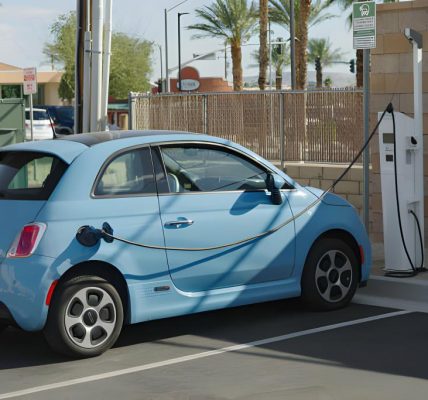In the dynamic landscape of today’s business world, creating an ideal workspace is crucial for fostering business productivity and ensuring the well-being of employees. The traditional notion of a workplace has evolved, with organizations recognizing the importance of a comfortable and efficient environment.
This article explores the various aspects of crafting the ideal workspace, from design principles to ergonomic considerations, with the ultimate goal of enhancing both business productivity and comfort.
The Impact of Workspace Design on Productivity
The design of a workspace is more than just aesthetics; it profoundly influences the productivity and well-being of employees. In this section, we delve into key considerations that highlight the impact of workspace design on overall business productivity.
1. Layout and Spatial Planning
The layout of a workspace plays a pivotal role in determining the flow of communication and collaboration among team members. Open floor plans have gained popularity, promoting transparency and accessibility.
However, striking the right balance between open spaces and private areas is essential. Designing zones for focused work, collaborative activities, and relaxation can contribute to a well-rounded workspace.
2. Lighting Matters
Lighting can significantly influence mood, focus, and overall well-being. Natural light is preferred, as it reduces eye strain and enhances the overall atmosphere.
Incorporating couture lamps and adjustable artificial lighting is also crucial to accommodate different tasks and preferences. The right balance between natural and artificial light creates a harmonious environment conducive to productivity.
3. Color Psychology in Workspace Design
Colors have a psychological impact on individuals and can evoke specific emotions. Choosing the right color palette for a workspace is a strategic decision. For example, blue is associated with calmness and focus, while green promotes a sense of balance.
Understanding color psychology can aid in creating an environment that aligns with the organization’s goals and the nature of the work being performed.
Ergonomics: Enhancing Comfort and Health
Ergonomics, the science of designing the workplace to fit the worker, is a crucial aspect of creating a comfortable and healthy workspace. This section explores the principles of ergonomics and how they contribute to the overall well-being of employees.

1. Investing in Quality Furniture
Ergonomic furniture is not merely a luxury but a necessity for a workspace that prioritizes the well-being of employees.
Comfortable chairs with proper lumbar support, adjustable desks, and keyboard trays can prevent musculoskeletal issues and enhance overall comfort. Investing in quality furniture is an investment in the health and productivity of the workforce.
2. Customizing Workstations
Recognizing that one size does not fit all, customizable workstations empower employees to personalize their workspace according to their preferences.
Adjustable chairs, monitor stands, and keyboard heights allow individuals to create a setup that caters to their unique needs. This not only boosts comfort but also promotes a sense of ownership and satisfaction among employees.
3. The Role of Breakout Areas
Integrating breakout areas within the workspace is essential for providing employees with spaces to relax and recharge.
Comfortable seating, recreational activities, and access to nature (indoor plants or outdoor spaces) contribute to a holistic approach to well-being. Breakout areas encourage social interactions, fostering a sense of community and reducing stress.
Technology Integration for Seamless Operations
In the rapidly evolving landscape of the modern workplace, the integration of technology is instrumental in achieving seamless operations. This section delves into the various ways organizations can leverage technology to enhance efficiency, communication, and overall business productivity.
1. Smart Office Solutions
The integration of smart office solutions can streamline operations and enhance overall productivity. From automated climate control to intelligent lighting systems, these technologies contribute to a seamless and efficient workspace.
Embracing the Internet of Things (IoT) can lead to energy savings, improved security, and a more responsive environment that caters to the needs of its occupants.

2. Collaboration Tools and Connectivity
In today’s interconnected world, seamless communication and collaboration are paramount. Providing employees with advanced collaboration tools, video conferencing facilities, and high-speed internet connectivity ensures that they can work efficiently, whether in the office or remotely.
The integration of technology should prioritize user-friendly interfaces to minimize disruptions and maximize business productivity.
3. Cybersecurity Measures
As technology becomes more integral to daily business operations, ensuring robust cybersecurity measures is imperative. A secure workspace is one where employees can confidently engage with digital tools without compromising sensitive information.
Regular training on cybersecurity best practices, secure network infrastructure, and up-to-date software contribute to a safe and productive digital environment.
Psychological Factors: Nurturing a Positive Work Environment
The psychological well-being of employees plays a pivotal role in shaping the overall work environment and, consequently, the productivity and success of an organization. This section explores the psychological factors that contribute to fostering a positive work environment.
1. Incorporating Biophilic Design
Biophilic design emphasizes the connection between humans and nature. Incorporating elements such as plants, natural materials, and views of nature can reduce stress, increase creativity, and improve overall well-being.
A workspace that incorporates biophilic design principles fosters a positive atmosphere that supports mental health and creativity.
2. Employee Well-being Programs
Recognizing that employees are the most valuable asset, organizations are increasingly investing in well-being programs. These programs encompass physical health, mental well-being, and work-life balance.
Providing access to fitness facilities, mental health resources, and flexible work arrangements demonstrates a commitment to the holistic well-being of employees, resulting in a more engaged and productive workforce.
3. Promoting a Positive Company Culture
A positive company culture is a key driver of employee satisfaction and productivity. Transparent communication, recognition programs, and opportunities for professional development contribute to a supportive work environment.
Fostering a sense of belonging and purpose among employees enhances their commitment to the organization, resulting in increased productivity and overall job satisfaction.

Future Trends in Workspace Design
As the business landscape undergoes continuous transformation, the future of workspace design is poised to reflect emerging trends that respond to evolving needs and preferences. Here, we delve into the anticipated trends that will shape the workplaces of tomorrow.
1. Hybrid Work Models
The COVID-19 pandemic accelerated the adoption of remote work, leading to a paradigm shift in traditional office dynamics. Hybrid work models, combining in-person and remote work, are likely to become the norm.
Workspace design will need to adapt to cater to the needs of a more flexible and diverse workforce, with a focus on creating collaborative spaces and providing the technology infrastructure necessary for seamless remote work.
2. Sustainable Design Practices
Sustainability is increasingly becoming a priority in workspace design. From energy-efficient buildings to eco-friendly materials, organizations are embracing environmentally conscious practices.
Sustainable design not only contributes to a healthier planet but also creates a positive image for the organization, appealing to environmentally conscious employees and clients.
3. Emphasis on Employee Empowerment
The ideal workspace of the future will prioritize employee empowerment, giving individuals more control over their work environment.
This may involve personalized lighting and temperature controls, flexible furniture arrangements, and even the option to choose between collaborative and quiet workspaces. Empowered employees are more likely to be engaged and motivated, leading to increased productivity.
Conclusion
Crafting the ideal workspace involves a holistic approach that considers physical, ergonomic, technological, and psychological factors. By prioritizing the well-being and comfort of employees, organizations can create an environment that fosters productivity, creativity, and overall job satisfaction.
As the business landscape continues to evolve, staying attuned to emerging trends and continuously adapting workspace design will be essential for maintaining a competitive edge and attracting top talent.






